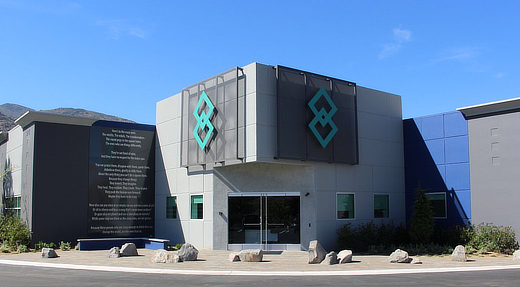Table of Contents
The first question a beginner in the field of cryptocurrency asks is, ‘what exactly is crypto mining, and how does it work?’ With Mining Watchdog, you can get all your questions related to blockchain, crypto mining easily answered. Adding records of transactions in a ledger made available in the public domain is called mining. The purpose of keeping the ledger public is so that it is accessible to each user who can verify and confirm the transactions. This helps in separating the legitimate ones from the fraudulent ones. Monies that have already been consumed elsewhere can be tracked and ensured that they are not reused.

Bitcoin mining virtual cryptocurrency concept
Miners play a pivotal role in the world of Bitcoin by validating the transaction and making the new blocks sealed off. By doing so, they earn a reward in Bitcoins for every block which gets successfully sealed.
The whole process is called mining because the frequency of coins appearing mirror the rate of extraction of precious minerals like gold and silver from beneath the surface.
Picking up the best Bitcoin Mining equipment
The quality of hardware plays a pivotal role in determining the efficiency of Bitcoin mining. Hence putting your money in the right kind of equipment becomes crucial if you do not waste your valuable time and energy. Multiple parameters help make the right choice, and the hash rate is one of the most important ones.
The total calculations a piece of equipment or hardware can compute every second is called the hash rate. As clear from the definition, the better the hash rate, the faster you can reach the mathematical solution, thus reaping the rewards by sealing off.
When the same value is repeatedly inputted into a hash function, it won’t result in a desirable outcome as these functions are meant not to give predictable results. The way to go about it is by randomly inputting as many values as possible in the shortest time possible. Being an extremely competitive space, you need to be quick to earn the reward, and that is where equipment with a high hash rate becomes important in determining success.
Units in Bitcoin Mining
The commonly used unit for measuring the hash rates are MH/sec (Megahashes per second), GH/sec (Gigahashes per second), and TH/sec (terahashes per second). The typical range of hash rate for hardware for Bitcoin mining starts with 336 MH/s and goes up to 14,000,000 MH/s.
Next, in the line of critical factors determining the hardware quality is energy consumption. The equipment needs electricity to run on. The energy consumption of the hardware is directly proportional to how powerful the hardware is. It may seem minuscule, but predicting your electricity bill based on the wattage consumption of the hardware is what’s going to determine the profit margin for you in crypto mining. You don’t want to pay more than what you might have probably earned as rewards from Bitcoin mining. Making an estimate is fairly simple. All you have to do is divide the hash count by total watts. Another way to go about it is by using an electricity bill calculator, readily available online.
Many people use the computer system for running the hardware, in which case you need to add up on the surplus electricity drawn through the hardware.
Bitcoin Mining Hardware
When Bitcoin was fairly a new concept, hash sequences were easily generated by personal computers and laptops. People were in awe of the decentralized cryptocurrency system and that bank systems, which are pretty much in a black box, were no longer required. As the competition was less, a computer with average specifications could do the job.
Significant progress was made when miners learned the high power graphics card’s potential and their role in drastically boosting the mining power. The other great advantage of graphics cards was the low power consumption, resulting in multiplying the efficiency by a factor of up to 100 and even more in some cases. The profit margins started to show up, giving birth to a now thriving mining industry around Bitcoin and other cryptocurrencies.
Being a lucrative business, there are many people involved in creating and operating huge mining farms. Farms are nothing but a large unit comprising of multiple mining equipment, coolers, and graphic cards. A key factor to note here is that such farms require a massive amount of electricity to operate, and hence determining the location of the farm is as important as any other aspect of it.
GPU Miners
CPU or central processing unit would have done the job for you in the early days of Bitcoin, but if you are venturing into crypto mining today, the Graphical Processing Unit or GPU is what you require. Created to solve complex polygons for visually appealing games, they are now equally useful in hashing mathematics to solve transaction blocks.
Though on the expensive side, GPUs prove highly advantageous over CPUs for hashing. A CPU generally has a hash rate of under 10 MH/sec, which is quite less than ATI 5970, a top-rated graphics card with a phenomenal power of more than 800 MH/sec.
Whereas GPU is good enough to start with for beginners, they have been largely sidelined by equipment developed with the sole purpose of mining, resulting in high power mining systems.
FPGA
Bitcoin mining moved a step further with the inception of Field Programmable Gate Array or FPGA. These are integrated circuits, which give you the flexibility to configure them once built. A crypto miner can purchase them in large quantities and configure them for mining before being put in the equipment.
The great advantage of FPGA devices is the efficiency with which they operate. On the one hand, where a graphics card with 600 MH/sec power takes in around energy of 400 watts, a decent FPGA device can give a hash rate of 826 MH/sec, consuming merely 80 watts.
ASIC Miners
Application Specific Integrated Circuit or ASIC is the current leader in efficiency, power, and other Bitcoin mining parameters. Functioning at mindboggling speed, ASIC increases the hashing power by a factor of 100 while considerably reducing electricity consumption.
Compared to previous technologies, ASIC is on the expensive side, being fabricated for the sole purpose of mining, but the results they deliver are unparalleled. AntMiner S9, a popular chip in the mining industry, offers a hash rate of 14,000,000 MH/sec and is priced at $1265. There are a few affordable ones, which come around $50, but you can’t expect that speed.
Jumping into a Bitcoin Mining pool

Considering everything mentioned above, if crypto mining seems too tough and expensive, the way to go about it is by becoming a part of a mining pool. In a mining pool, multiple users simultaneously contribute to completing a block. Being in a pool for mining cryptocurrencies significantly increases the chances of finishing a block and reaping the benefits. The rewards get distributed based on the contribution of each member, calculated in terms of processing power.
Bitcoin mining can be highly profitable, whether done individually or in a pool, depending largely on the factors mentioned above. Mining Watchdog helps you access all critical information under one roof so that you can make the best decision.





No Comment